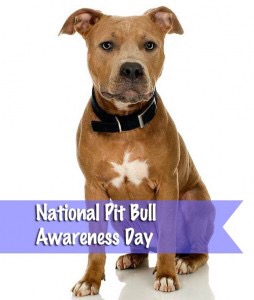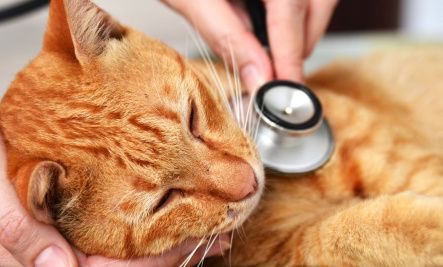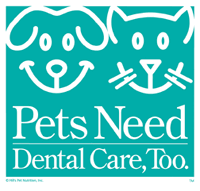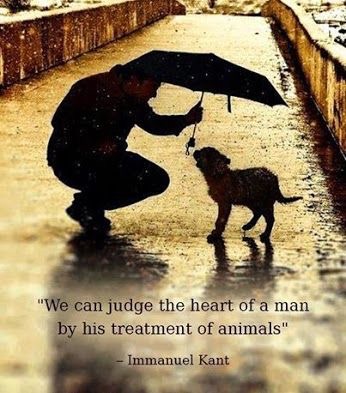
Are you looking for pet holidays that recognize the special role that dogs, cats, and other pets play in our lives? You’ve come to the right place. This extensive calendar, updated throughout the year, features fun pet holidays as well as serious pet awareness days, weeks and months that focus attention on challenges in the pet world.
January
National Train Your Dog Month
Walk Your Pet Month.
Adopt a Rescued Bird Month.
Jan. 2, 2015: National Pet Travel Safety Day.
Jan. 14, 2015: National Dress Up Your Pet Day.
Jan. 22, 2015: National Answer Your Cat’s Question Day.
Jan. 24, 2015: Change a Pet’s Life Day.
Jan. 29, 2015: Seeing Eye Guide Dog Birthday.
February
Spay/Neuter Awareness Month. (Humane Society of the United States)
Pet Dental Health Month.
Responsible Pet Owners Month.
Adopt a Rescued Rabbit Month.
National Prevent a Litter Month.
Unchain a Dog Month.
Feb. 7-14, 2015: Have a Heart for Chained Dogs Week.
Feb. 16-17, 2015: Westminster Kennel Club Annual Dog Show. Held at New York City’s Madison Square Garden, this event is televised.
Feb. 14, 2015: Pet Theft Awareness Day.
Feb. 15-21, 2015: National Justice for Animals Week.
Feb. 20, 2015: Love Your Pet Day.
Feb. 22, 2015: Walking the Dog Day.
Feb. 23, 2015: International Dog Biscuit Appreciation Day.
Feb. 24, 2015: World Spay Day. Annual campaign by the Humane Society International and The Humane Society of the United States; held the last Tuesday of February.
March
Poison Prevention Awareness Month.
Adopt a Rescued Guinea Pig Month.
March 7, 2015: Iditarod Trail Sled Dog Race begins. Called “The Last Great Race on Earth,” this grueling race travels along a path that alternates between two paths, changing in even and odd years. The race crosses two mountain ranges in conditions that range from 30 degrees above to 30 degrees below zero.
March 3, 2015: If Pets Had Thumbs Day.
March 1-7, 2015: Professional Pet Sitters Week.
March 5-8, 2015: Crufts. Held in Birmingham, England, this is the world’s largest dog show, featuring nearly 28,000 canines in its four days.
March 15-21, 2015: National Poison Prevention Week.
March 23: National Puppy Day.
April
National Pet First Aid Awareness Month. This event is an effort by the American Red Cross to draw attention to the need to know specialized pet first aid.
Prevent Lyme Disease in Dogs Month.
Prevention of Cruelty to Animals Month. (ASCPA)
National Pet Month. (UK)
April 12-18, 2015: Animal Control Officer Appreciation Week.
April 11, 2015: National Pet Day.
April 18, 2015: Pet Owners Independence Day.
April 22, 2015: Earth Day.
Third week in April. Animal Cruelty/Human Violence Awareness Week. An effort by the Humane Society of the United States.
Third week in April. National Pet ID Week.
April 26, 2015: National Kids and Pets Day.
April 25, 2015: World Veterinary Day. This event from the World Veterinary Association is always celebrated on the last Saturday in April.
April 25, 2015: Hairball Awareness Day.
May
National Pet Month (US)
Responsible Animal Guardian Month.
Pet Cancer Awareness Month. Sponsored by Pet Cancer Awareness and the Blue Buffalo Foundation for Cancer Research. (Also see November events.)
Chip Your Pet Month.
National Service Dog Eye Examination Month. The American College of Veterinary Optholmologists hosts this annual event when over 200 veterinary optholmologists donate their services to provide eye exams to service dogs in the US and Canada.
May 1: National Purebred Dog Day
May 4-10, 2015: American Humane’s Be Kind to Animals Week. This week-long event has been celebrated since 1915. Always the first full week of May.
May 3-9, 2015: National Pet Week. Always held the first full week of May by the American Veterinary Medical Association.
May 4-10, 2015:American Humane’s Be Kind to Animals Week . An initiative of the HSUS, this week is always scheduled to begin the Monday before Mother’s Day.
May 18-24, 2015: Dog Bite Prevention Week. This event by the American Veterinary Medical Association (AVMA) along with the United States Post Office (USPS) and the American Academy of Pediatrics (AAP) focuses attention on preventing dog bites.
June
Adopt-a-Cat Month®. From the American Humane Association.
Adopt-a-Shelter-Cat Month. From the ASPCA.
National Pet Preparedness Month. This month, timed for the first month of hurricane season, urges people with pets to make preparations in case they should be hit by a disaster…and that includes making plans for what you would do with your dog in case of a hurricane, tornado, flood or other natural disaster.
June 4, 2015: Hug Your Cat Day.
First week in June. Pet Appreciation Week.
June 9, 2015: World Pet Memorial Day.
June 10-14, 2015: World Dog Show, Milan, Italy. This large show is hosted by a different county every year.
Mid-June: Animal Rights Awareness Week.
June 26, 2015: Take Your Dog to Work Day.
July
Dog House Repair Month.
July 4: Independence Day. This US holiday is no holiday for dogs; the sounds of fireworks causes many dogs to panic and run, resulting in many lost dogs every year.
July 15: National Pet Fire Safety Day. Sponsored by the The National Volunteer Fire Council (NVFC), ADT Security Services and the American Kennel Club® (AKC).
July 21: National Craft for your Local Shelters Day.
July 31: National Mutt Day. Also see Dec. 2.
August
Aug. 1: DOGust Universal Birthday for Shelter Dogs. The North Shore Animal League America, the world’s largest no-kill animal rescue and adoption organization, declared August 1 as a birthday for all the shelter animals whose birthdays are unknown. Happy DOGust!!
Aug. 5: Work Like a Dog Day.
Aug. 2-8, 2015: International Assistance Dog Week.
Aug. 15: National Check the Chip Day. AVMA and the American Animal Hospital Association (AAHA) joined together to create “Check the Chip Day.”
Aug. 15, 2015: International Homeless Animals’ Day®. From the International Society for Animal Rights.
Aug. 17: National Black Cat Appreciation Day.
Aug. 26: National Dog Day.
Aug. 30. National Holistic Pet Day.
September
National Disaster Preparedness Month. Led by FEMA’s Ready Campaign, Citizen Corps and The Advertising Council, this effort encourages individuals, families, businesses and communities to work together and take action to prepare for emergencies. Visit Ready.gov and CitizenCorps.gov.
Second Sunday in September. National Pet Memorial Day. Established by the International Association of Pet Cemeteries (IAPC).
Last full week in September: National Dog Week.
Last full week in September. Deaf Pet Awareness Week. By Petfinder.com.
Sept. 13, 2015: Pet Birth Defect Awareness Day. A day dedicated to the issue of pet birth defects including information on identification, prevention and treatment. Sponsored by the MBJungle Foundation.
Sept. 23: Dogs in Politics Day (also known as Checkers Day). Recognizing the dogs of politicians.
Sept. 28: World Rabies Day. Sponsored by the Global Alliance for Rabies Control.
October
Adopt-A-Dog Month®. By American Humane Association.
Adopt-a-Shelter Dog Month. By ASPCA.
National Animal Safety and Protection Month.
National Pet Wellness Month.
1st Week of October. National Walk Your Dog Week.
October 4: World Animal Day.
1st Full Week of October. Animal Welfare Week (AVMA)
Oct. 11-17, 2015: National Veterinary Technician Week. Sponsored by the National Association of Veterinary Technicians of America.
Oct. 16: National Feral Cat Day.

Oct. 16: National Feral Cat Day.
Last Saturday in Oct.: National Pit Bull Awareness Day.
Oct. 28: Plush Animal Lovers Day. A day that most dogs will be happy to celebrate…as they unstuff them…
Oct. 29: National Cat Day.
Oct. 30: National Black Cat Day in the UK.
November
*MORE November holidays; observances
Adopt a Senior Dog Month. By ASPCA.
National Pet Awareness Month.
National Senior Pet Month.
Pet Cancer Awareness Month. Sponsored by Veterinary Pet Insurance (VPI) and the Animal Cancer Foundation. (Also see May events).
Pet Diabetes Month.
National Dog Show. Always broadcast in the US on Thanksgiving, this event is held at The Greater Philadelphia Expo Center in Oaks, Pennsylvania and is hosted by the Kennel Club of Philadelphia. Sanctioned by the American Kennel Club, the event features 2,000 dogs.
First full week of Nov: National Animal Shelter Appreciation Week. by The Humane Society of the United States.
Nov. 17: National Take a Hike Day.
Nov. 17: National Black Cat Day.
December
Dec. 2: National Mutt Day. Also see July 31.
















You must be logged in to post a comment.